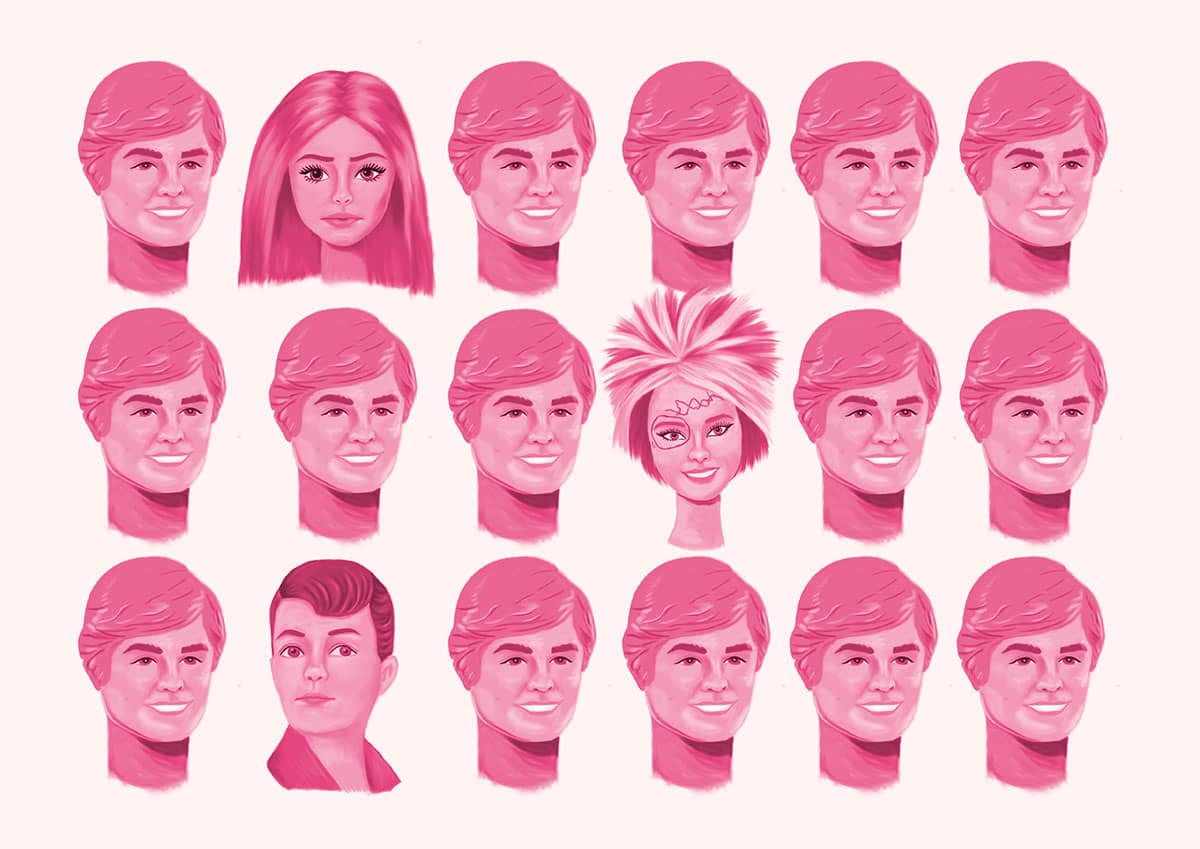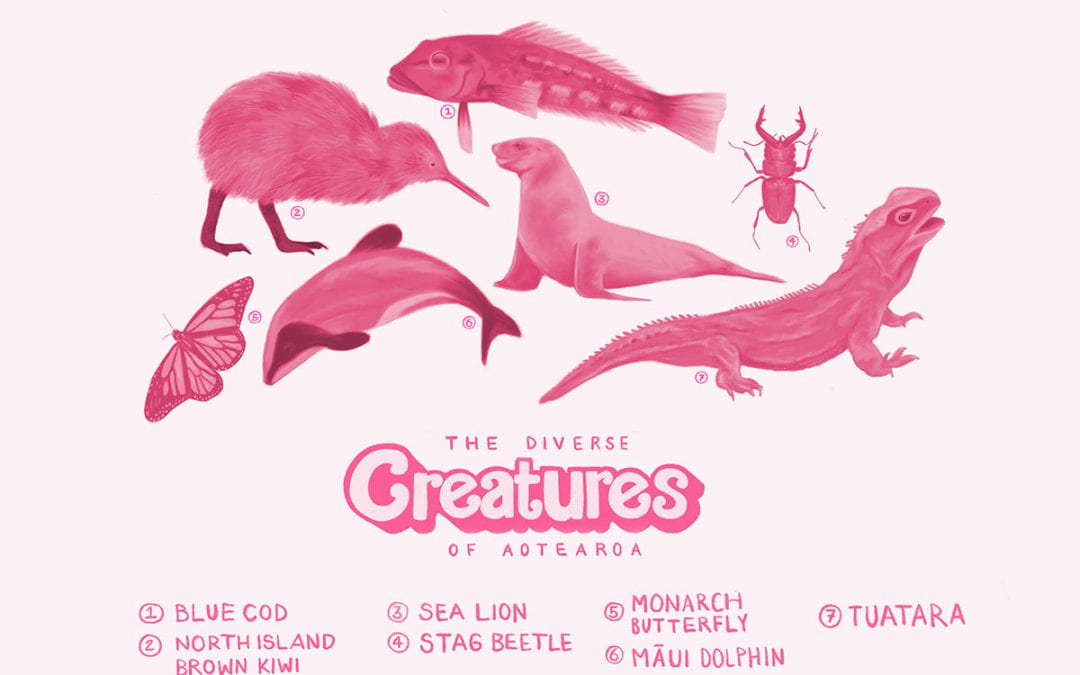3 October 2023
A collaboration between ecologist Will Godsoe, educational theorist Kirsten Locke, and illustrator Jean Donaldson. Edited by Anna Brown and Jonathan Burgess.
One of the amazing things about nature is the sheer diversity of living things. There are thousands of species of birds, hundreds of thousands of species of insects, and countless varieties of microbes that scientists are still learning how to name, let alone study.
Does this diversity matter? Many scientists think so, but after generations of research the answers we come to often seem abstract. We can say things like “on average plants seem to grow better in a community with a variety of other species”. But going deeper than that requires a lot of experimental design, calculus and information theory.
Perhaps what we actually need is some popcorn.
The 2023 Barbie movie explores diversity in a glorious Technicolor shade of pink. It can be seen as a narrative for the importance of diversity in the social world: for diversity of ideas, for social justice outcomes, for political representation, for empathetic and other understandings of difference, inclusion and acceptance.
Focusing on the experiences of the characters also highlights why diversity can be so important in ecology. Diversity is important for both plants and people. Deepening and applying our understanding of the nature of diversity can improve both social and ecological outcomes.
The Barbie movie highlights how a lack of diversity can limit the ability of a community to change. In Barbie Land all power is controlled by Barbies. This lack of diversity (or “Kennergy”) limits what is possible in Barbie Land. A running joke of the movie is that Ken realises these limitations when he comes to visit the ‘real world’ and experiences a taste of patriarchy.
Ken is so intoxicated with this power that he seeks to change Barbie Land so that the Kens are in control. The problem is that this new Ken World lurches into misogyny and tips the power balance so that only the Kens can thrive at the expense of all the Barbies. Diversity hasn’t been achieved, and so Ken World is just as (if not even more so) unstable than Barbie Land.

The Barbie movie shows us that communities that lack diversity are unable to adapt in the face of challenges and that lack of diversity can have harmful effects that affect all members of a community.
In nature, a lack of diversity can also keep ecological communities from adapting. A term ecologists use for this is the ‘portfolio effect’. Like an investment portfolio that balances risk with a range of different forms of investment, a community that includes a diverse array of species will be better able to change in the face of challenges. A community where one species dominates is going to be susceptible to disasters.
The reason this metaphor works is that individual experiences of diversity (like in the Barbie movie) echo the way diversity works in many other circumstances. The ways that diverse ecological communities adapt to challenges can parallel the ways that human society can benefit from multiple insights and different perspectives available in diverse communities.
At the risk of spoiling the plot for you, Barbie is able to rescue Barbie Land from the ludicrous grip of the Kens. The balance of power and the resilience of that world are strengthened by the inclusion of multiple forms of representation where even Weird Barbie and Allan have meaningful contributions – alongside Ken, when he’s not busy doing ‘beach’.
There are unique features to diversity in ecology that don’t translate so easily to the social world. Characters like Ken and Barbie have the capacity to tell us about their experiences in communities that lack diversity. Plants… not so much.
When the plants can’t speak for themselves, visiting Barbie Land gives us a creative opportunity to consider the conditions in which both plants and humans can flourish.
Will Godsoe is a Principal Investigator with Te Pūnaha Matatini who seeks to better forecast how species will respond to climate change and other environmental disturbances
Kirsten Locke is a Principal Investigator with Te Pūnaha Matatini who applies a history of educational ideas to current social and educational challenges and issues.
Jean Donaldson is a designer and illustrator who works with Toi Āria: Design for Public Good. She is based in Te Whanganui-a-Tara. You can see more of her work at https://jeanmanudesign.com/.

